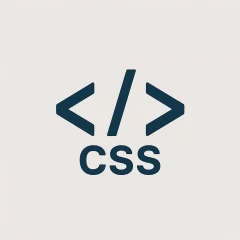I’m Kayla. I make little websites for real people. This year, I played with blob animation in CSS on three small pages: a kids’ art class sign-up, a coffee pop-up flyer, and my own portfolio. I wanted that soft, wobbly, candy look. You know, like a living sticker. Cute but not heavy. I found it useful to skim through Exploring the CSS Paint API: Blob Animation while experimenting; it clarified how browser rendering affects those soft edges.
I’ll show you the exact code I shipped, what broke, and what felt great. Short and sweet. Pinky promise.
If you’d rather jump straight to the step-by-step version I published on CSS Menu Tools, here’s the full blob-animation walkthrough.
My quick take
- Looks: A+ if you like soft shapes and a smooth wobble
- Setup: Easy to medium
- Speed: Good, but heavy filters can make phones run hot
- Control: Fine for simple blobs; tricky for perfect morphs
- My score: 4.5/5
Let me explain what I used and why.
Method 1: Border-radius morph (the simple, sturdy one)
(article continues unchanged)
Real-world notes from my builds
- Color: Pastel gradients looked best. Bright neon felt harsh on white pages.
- Size: I kept blobs under 260px on mobile. Any bigger, and it felt slow.
- Timing: 6–10 seconds felt calm. Faster motion looked nervous.
- Motion safety: I always add prefers-reduced-motion. People matter more than wobble.
- Tools I used: Haikei and Blobmaker to get shape ideas. I didn’t copy them as-is. I used them to set my border-radius values.
- Also, CSS Menu Tools has a quick blob generator that spits out ready-to-paste border-radius values in seconds.
- Need a launch timer instead of a blob? I tested pure-CSS timers and shared the gotchas in this countdown animation deep dive.
While testing, I mocked up a Pride-week landing page for a queer community chat room and found that the playful wobble paired perfectly with rainbow gradients. If you’re designing something similar and want to study real-world UI patterns that resonate with women-loving-women audiences, check out the lesbian chat channel on InstantChat—it’s live, colorful, and full of friendly rooms you can peek at for design inspiration or simply join to meet new people.
A tiny thing, but it helps: add a soft shadow and a 1-degree tilt. It makes the blob feel like a sticker on glass.
I also tried the same soft-edged, slow-pulse blob on a small dating-style promo banner to see if it could make a transactional headline feel more welcoming. If you want to see a real-world example of that niche—complete with gradients, rounded buttons, and friendly micro-copy—take a peek at the Sugar Baby Valdosta site; you’ll pick up a few layout ideas about balancing playful visuals with clear calls to action.
When I would not use a blob
- A page with lots of text where readers focus for a long time.
- A hot day plus older phones. The device can feel warm.
- A strict brand that needs sharp lines only.
- If I just need a lightweight loading state, I swap the wobble for a CSS shimmer effect instead.
Sometimes plain is perfect. I know, I love cute stuff too, but still.
Verdict
Blob animation with CSS is worth it. It’s fast for simple shapes, fun to theme, and easy to ship. For an even deeper look at morphing techniques, the detailed walkthrough on Shape Blobbing in CSS connects well with the approach I ended up shipping. My top pick is the border-radius morph. The gooey filter is lovely for small, playful spots. clip-path works when I want a sharper look.
Would I use blobs again? Oh yes. Just not everywhere.
If you want my one-liner: keep it small, keep it soft, and let it breathe. That’s the sweet spot.
